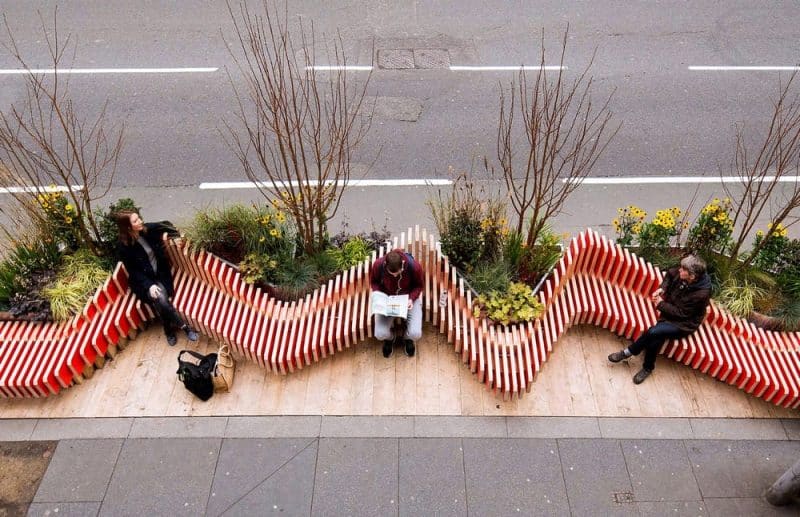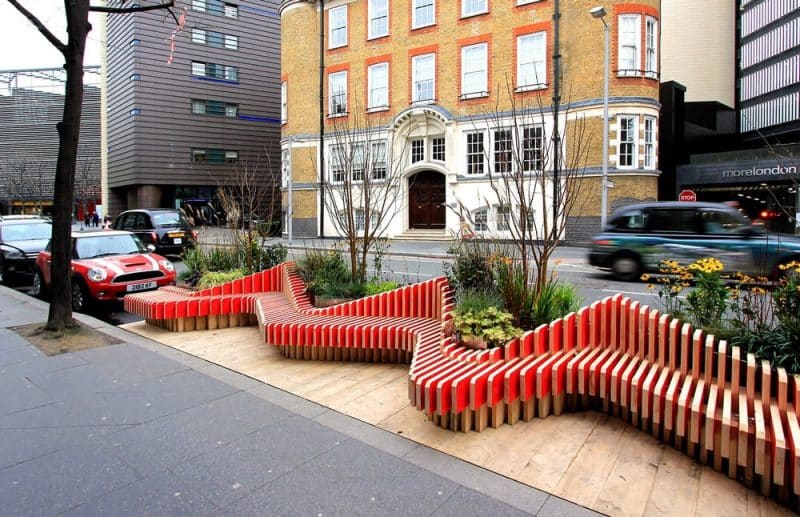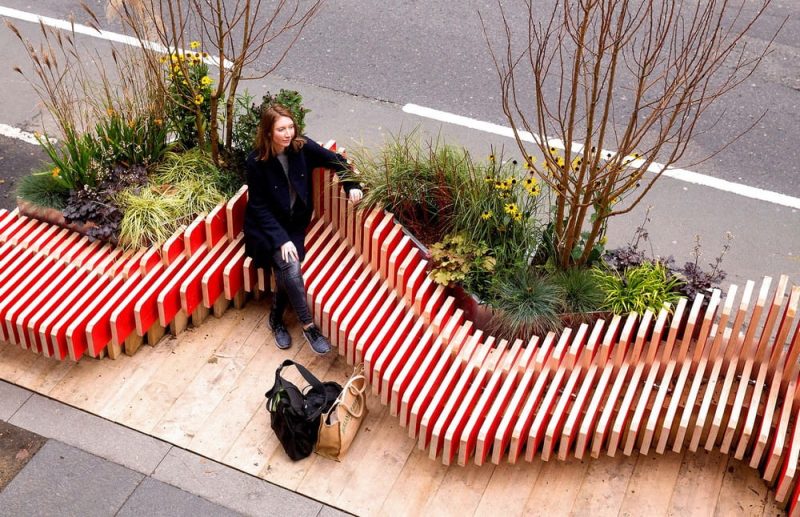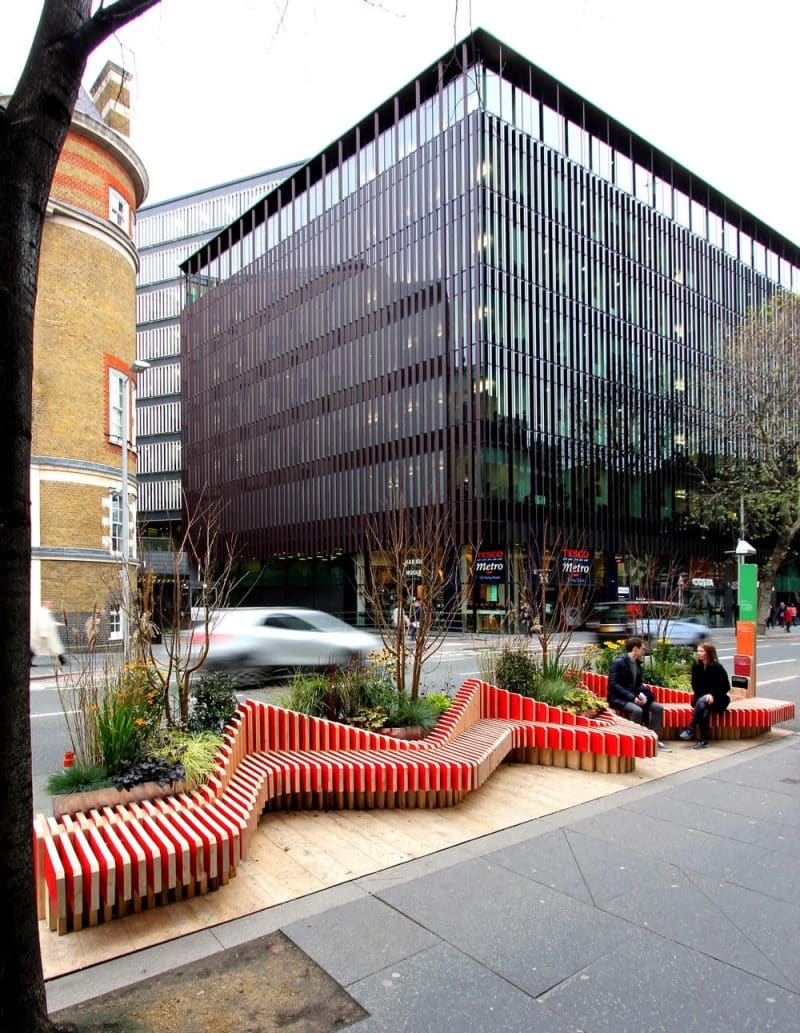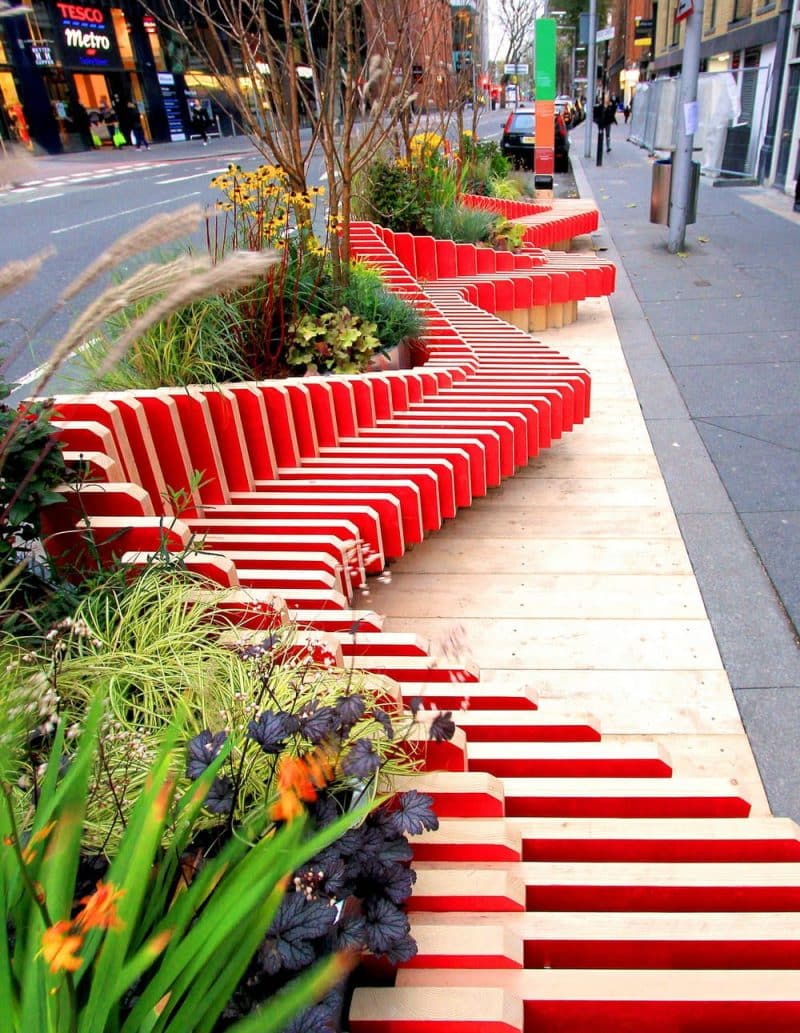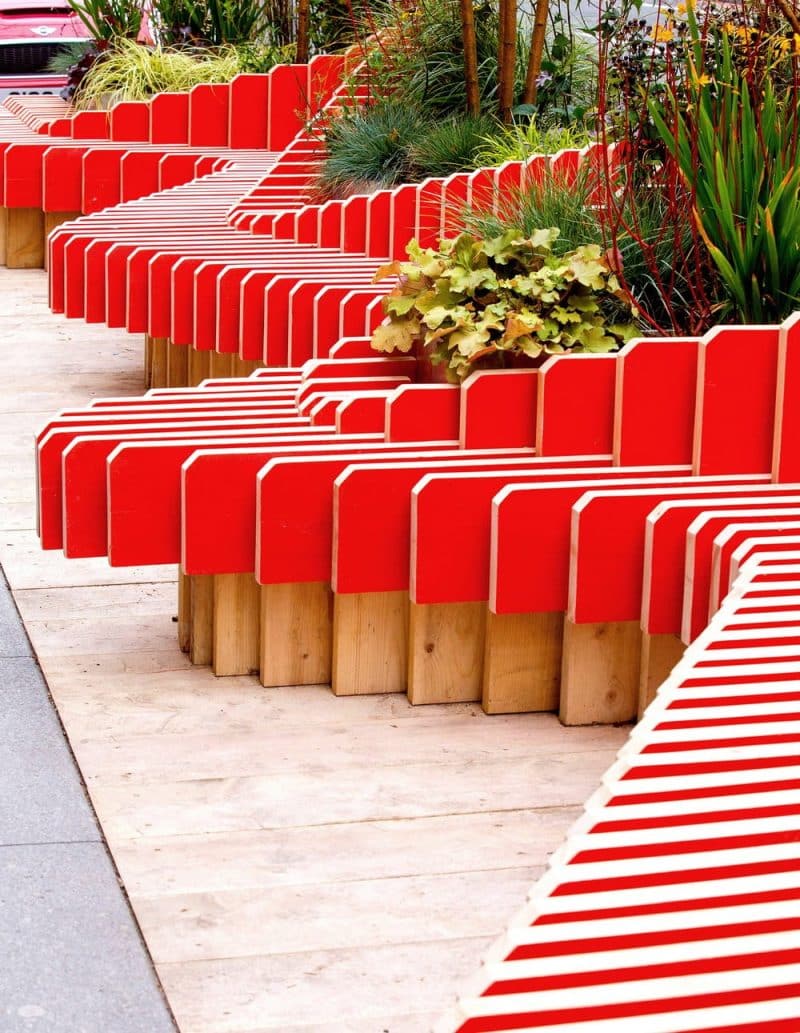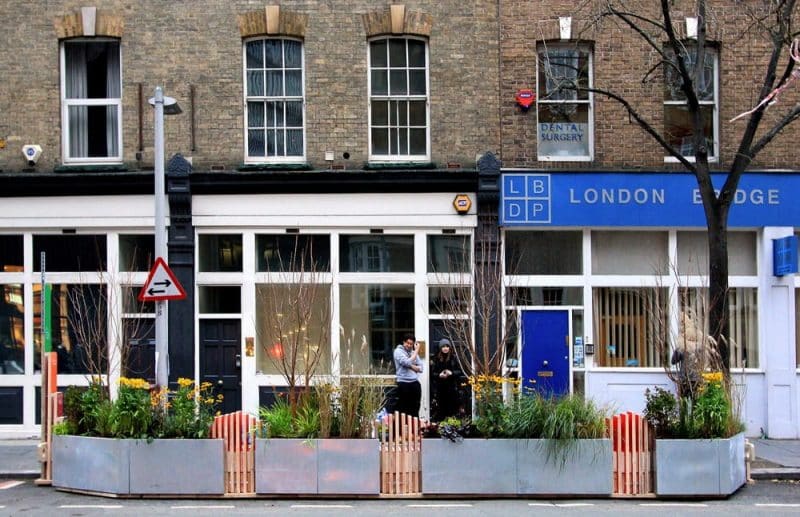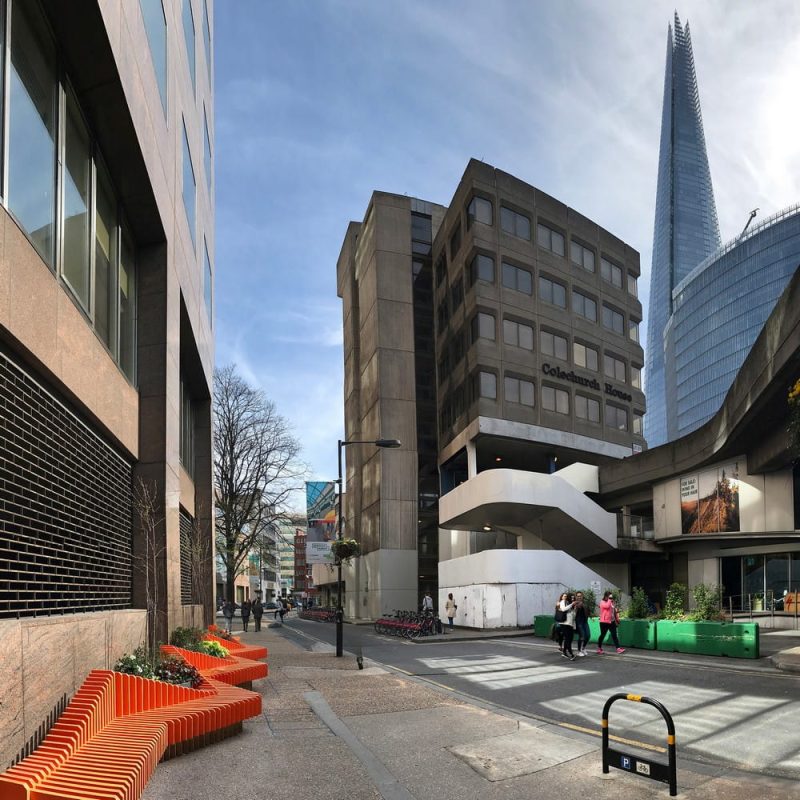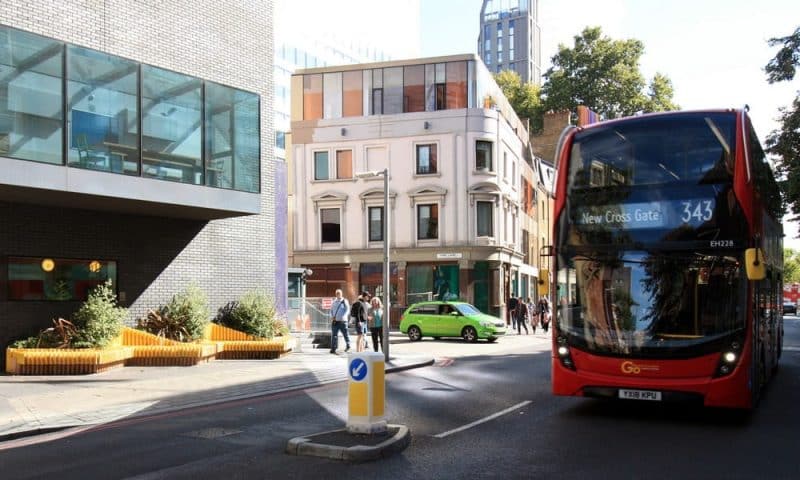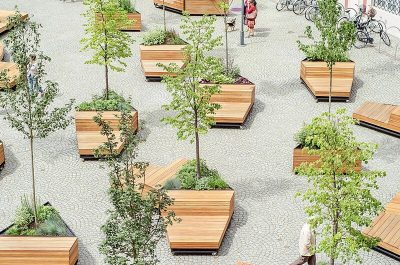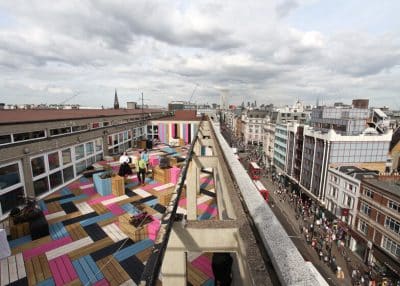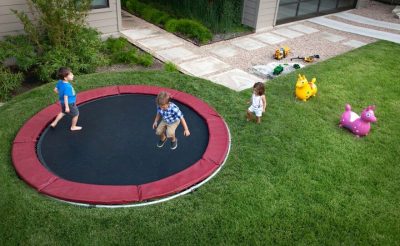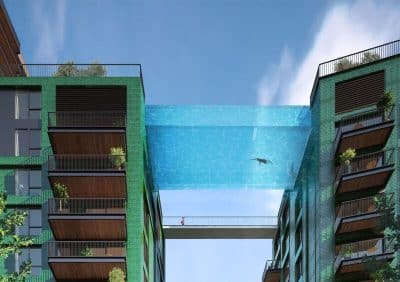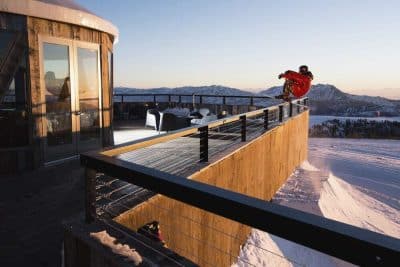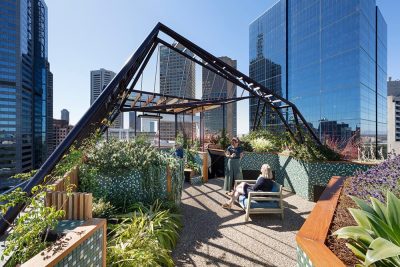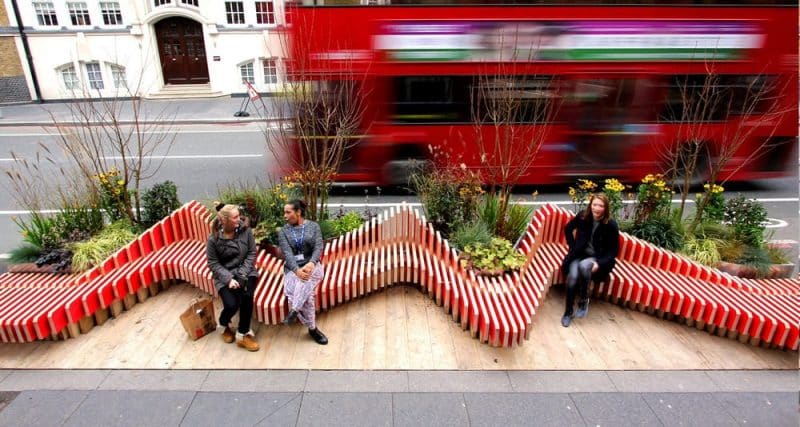
Project: Parked Bench
Architecture: Butler Wiltshire
Location: London, United Kingdom
Year: 2015
Photo Credits: Ed Butler
Parked Bench by Butler Wiltshire is a portable micro-park that transforms two parking spaces on a busy London street into a public seating area with planting and air quality monitoring. This innovative project not only enhances urban greening but also encourages public interaction and environmental awareness.
Design and Features
The portable micro-park replaces two standard car parking spaces, providing urban greening, public seating, and air quality monitoring. The design centers around a singular sculptural seating element. Around this element, zones of planting and small pockets of public space overlap, encouraging passers-by to stop and gather. Moreover, the interwoven seating and planting create a buffer zone from the busy road, serving as an organic extension of the pavement.
Materials and Construction
Materials for the parklet are low-cost and off-the-shelf. The bench and base elements are constructed entirely from standard scaffolding boards. This approach not only keeps costs down but also ensures ease of construction and maintenance.
Environmental Impact
The parklet includes an air quality monitor that feeds real-time data to an app and website designed by Kings College London. This forms part of their wider network of air quality data collection points within London. Consequently, the data collected helps in monitoring and improving the city’s air quality.
Implementation and Expansion
The first parklet was delivered as part of the Team London Bridge ‘Fresh Air Squares’ initiative, supported by the Transport for London Future Streets Incubator fund. Subsequently, additional benches were installed in and around the London Bridge area between 2017 and 2019.
Conclusion
In summary, the Parked Bench by Butler Wiltshire exemplifies how innovative urban design can repurpose parking spaces into functional public areas. By providing seating, planting, and air quality monitoring, the project not only enhances the urban environment but also promotes public well-being and environmental consciousness.
